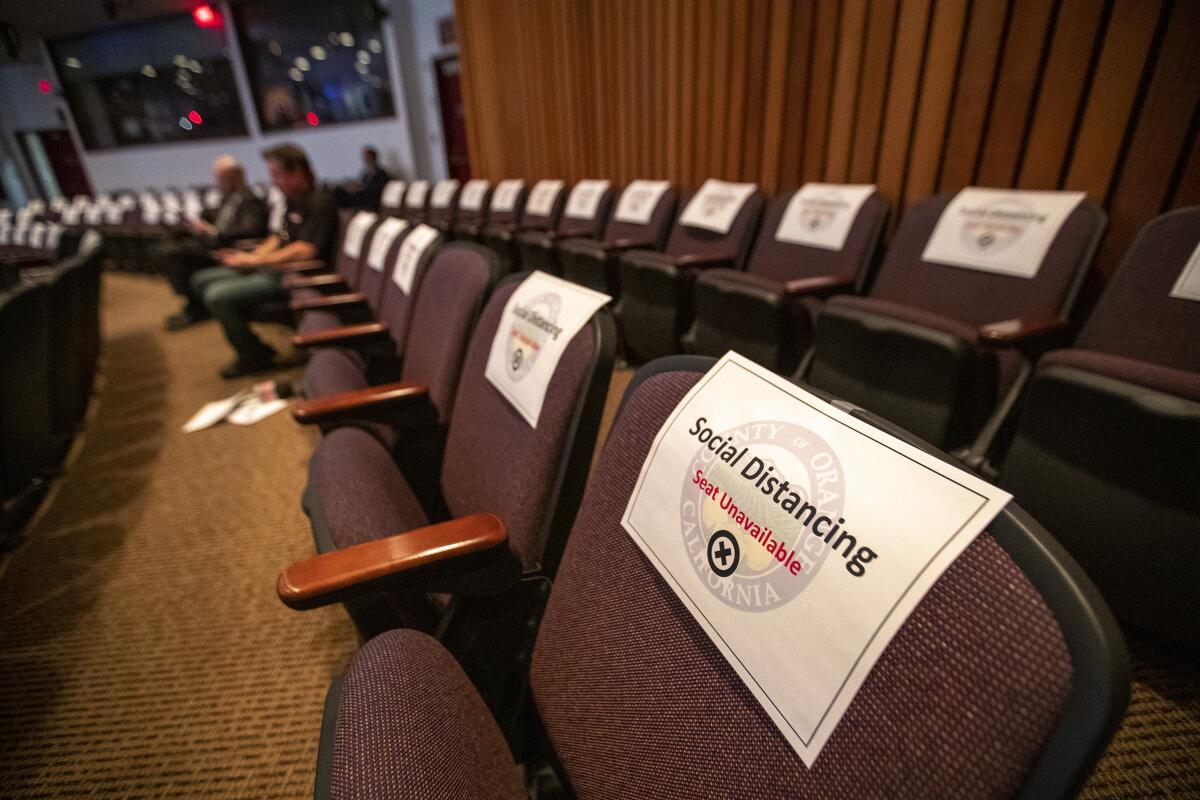How to mix compassion and cooperation into social distancing

- Share via
Resilient societies are able to bounce back from disruptions. The capacity to rebuild physical infrastructure is, of course, important after calamity strikes. But resilience also requires shoring up social infrastructure, the ties that bind us together.
During events like 9/11 and Hurricane Katrina, the efforts of community members were pivotal to saving lives. In fact, when Superstorm Sandy destroyed parts of New York City in 2012, one of the biggest predictors for which neighborhoods recovered quickest was the degree to which people living in them felt that they could count on each other for help. People’s willingness to assist their neighbors was key.
As we face the COVID-19 epidemic, social infrastructure will play a crucial role. So much of effective social distancing depends on our willingness to act in ways that seemingly put the interest of others before our own. In other words: to be compassionate.
In the face of crises, fear is a common emotion and in the short term, it can grab our attention and make us more cautious. But it can also lead to problems like panic buying and hoarding of resources. It can cause us to care less about others, especially people who are from different ethnic backgrounds. In short, fear can pull us inward, away from the cooperation that’s needed now.
Compassion, on the other hand, is an emotion that can drive cooperation. As research from my lab and others has shown, feelings of compassion toward one person can spill over and affect how we treat others — even strangers — by pushing us to share their burdens or to refrain from causing them harm. It makes us willing to sacrifice for a common benefit.
As many evolutionary simulations have shown, societies where people are primarily cooperative thrive in the long run compared with those where people are more competitive with each other. Selfish behaviors like price-gouging or hoarding erode trust if they become a social norm and could lead to a collapse of resources that imperils everyone.
Humans innately know this. And it’s why adversity can bring about compassion as well as fear. Our research into how people respond to adversity has shown that many of those who experienced natural disasters, serious illness and loss of loved ones became more compassionate toward others in response to these tragedies.
The tricky part with the COVID-19 crisis is that it’s scrambling the ways we normally experience compassion and cooperation. Social distancing means we can’t lend a shoulder to cry on; we can’t come together in person to help out older, more vulnerable people; we can’t go out to support our local restaurants and shops.
While this situation could lead to a feeling of hopelessness, or even nihilism, I’ve been heartened to see people finding creative ways to adapt. Just look at the viral videos of the Italians singing in unison from their balconies and Spaniards collectively applauding the nation’s healthcare workers. While these acts might seem minor, psychologically speaking, they’re incredibly powerful.
To the mind, moving or singing in synchrony is a signal of bonding — a sign that our outcomes are joined. Piercarlo Valdesolo, a professor at Claremont McKenna College, and I have found that even simple acts of synchrony — having people tap their hands in time to random tones together — leads them to feel more compassion for each other and will even cause them to go out of their way to assist one another. During this health emergency, that could lead to a greater willingness to stay at home, to buy only what’s needed and to share resources in whatever way is possible.
There are, in fact, ways to cultivate compassion to support our better instincts.
You could, for example, take part in a “virtual reciprocity ring” — a group exercise that creates a norm for the giving of assistance. Get a group of people you know and have them each bring in one or two more people you don’t know. Everyone then posts something they need help with: an elderly person who’s homebound may want help ordering groceries online; a parent may need child-care because schools have closed; a laid-off worker may need some financial help at the moment. Each person in the ring then volunteers to pick a post and agrees to help.
These actions can improve lives, but also create a web of gratitude. And that sense of gratitude will lead those taking part in the ring to continue to pay favors forward, a phenomenon that has been demonstrated in our research. In this way, the cycle of gratitude and compassion becomes self-sustaining.
The research I’ve done with colleagues has also found that meditation, which can reduce anxiety and blood pressure, can increase compassion and reduce hostility. After only a few weeks of practicing meditation, people in our studies were more willing to help strangers in need and to refrain from responding aggressively when provoked.
We could all benefit from this state of mind when we’re tempted to break quarantine or wrestle someone for that last roll of toilet paper in the supermarket.
David DeSteno is a professor of psychology at Northeastern University.
More to Read
A cure for the common opinion
Get thought-provoking perspectives with our weekly newsletter.
You may occasionally receive promotional content from the Los Angeles Times.









